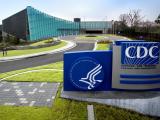May 19, 2011
WHA committee takes action on pandemic topics
Over the past 2 days, a committee at the World Health Assembly (WHA) meeting in Geneva moved forward two items related to pandemic influenza: (1) a final report on the World Health Organization's (WHO's) performance during the 2009 H1N1 pandemic and an assessment of how the International Health Regulations (IHRs) functioned and (2) an influenza virus-sharing and pandemic preparedness agreement. At a press briefing yesterday, Harvey Fineberg, MD, who headed the independent pandemic review committee and is president of the Institute of Medicine, said that during committee discussion yesterday member states warmly received the report and unanimously adopted a resolution sending it to the full WHA. They also asked that progress on the report's recommendations be reviewed in January at the WHO's executive board meeting. Yesterday the WHA committee began discussing the virus-sharing agreement, then finished its deliberations today. Gregory
Hartl, a WHO spokesman, told CIDRAP News that the report, which was finalized by a working group on Apr 16 after more than 3 years of deliberation, passed out of committee to go to the full WHA. He said 37 countries spoke, and nearly all were extremely positive about the agreement. The WHA is scheduled to discuss the fate of the remaining stocks of smallpox virus tomorrow. The meeting runs through May 24.
May 18 audio archive of Fineberg press conference
Study: ED diagnostic codes affected by perceptions of flu activity
Using emergency department (ED) data for syndromic surveillance to detect influenza outbreaks early may be impeded because case diagnosis is influenced by what ED staff believes to be occurring in the community, according to an Australian study. Using data from the Victorian Department of Health's pilot syndromic surveillance program called SynSurv, researchers analyzed how diagnostic ICD-10 codes correlated with confirmed flu cases during the 2009 H1N1 pandemic. They found a marked increase in weekly counts of both laboratory-confirmed cases and relevant ICD-10 codes during the pandemic period and found that five ICD-10 codes were moderately to significantly correlated with flu cases. However, none of these codes was correlated with lab-confirmed flu outside the flu season. The team also found that the increase in lab-confirmed flu was more than four times greater than the previous high, in 2007, even though community
influenza-like-illness activity was comparable in 2009 and 2007. They write, "This study suggests that the choice of codes made by ED staff to record a case of influenza-like illness is influenced by their perceptions of how much influenza is circulating at the time."
May 18 BMC Public Health abstract
Researchers find high genetic diversity of pandemic H1N1 on campus
Researchers who conducted a phylogeographic analysis of pandemic 2009 H1N1 influenza at the University of California, San Diego, found relatively low levels of on-campus transmission but high genetic variation in virus samples. They studied samples collected from October though November 2009 and found that complete viral genome sequences revealed between 24 and 33 independent introductions of pandemic H1N1 onto the campus. The also found "extensive spatial mixing, such that there was little geographical clustering by either student residence or city zip code." For example, students who were ill on the same day and lived in the same dorm had phylogenetically distinct lineages of the virus. They conclude that the virus is characterized by "a remarkable spatial fluidity, and which is likely to impede community-based methods for its control, including class cancellations, quarantine, and chemoprophylaxis."
May
18 J Virol abstract
African Americans with lupus have higher immune response to flu vaccine
African Americans who have systemic lupus erythematosus (SLE) had a higher antibody response to influenza vaccination than did European American SLE patients, according to a study today in Arthritis & Rheumatism. A low antibody response was also linked to treatment with prednisone, a history of hemolytic anemia, and increased disease flares. US researchers studied 72 SLE patients before vaccination and at 2, 6, and 12 weeks post-vaccination, and 72 control patients without SLE. The control group showed greater increase in total antibodies compared with all SLE patients, but among SLE patients, African Americans were three times more likely to be in the top half of antibody response than were European Americans. Patients taking 10 mg/day or more of prednisone were more likely to have a low response to vaccination (67%) than a high response (47%), and a low antibody response was also associated with a
history of hemolytic anemia and moderate to severe disease flares.
May 19 Arthritis Rheum abstract
May 19 Wiley-Blackwell press release
Frog breeder tied to Salmonella outbreak stops distributing
A report today from the US Centers for Disease Control and Prevention said that the number of confirmed Salmonella cases linked to African dwarf frogs has risen by 2, to 224, and that the breeder implicated in the outbreak voluntarily stopped shipping the frogs on Apr 19. The update, in Morbidity and Mortality Weekly Report (MMWR), said that the actual number of cases in the multistate outbreak, which began in 2008, is likely much higher. It said that the median age of patients is 5 years, and that 65% had contact with the frogs within a week before they became ill. They report said that samples collected from aquariums in six homes of patients yielded the Salmonella Typhimurium outbreak strain, and samples collected at the California breeding facility in January 2010, April 2010, and March 2011 also yielded the outbreak strain.
May 20 MMWR report


















